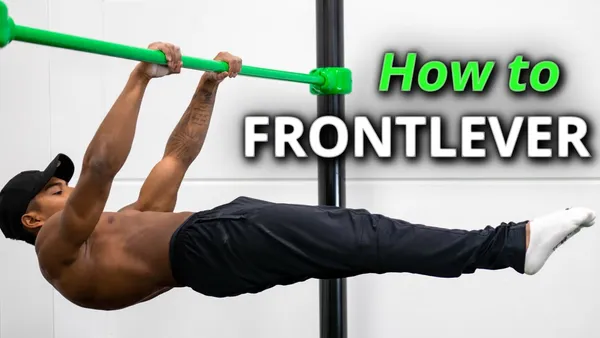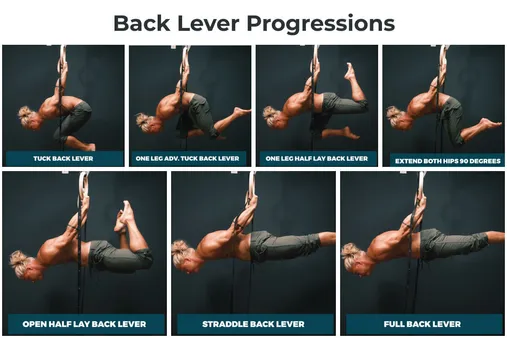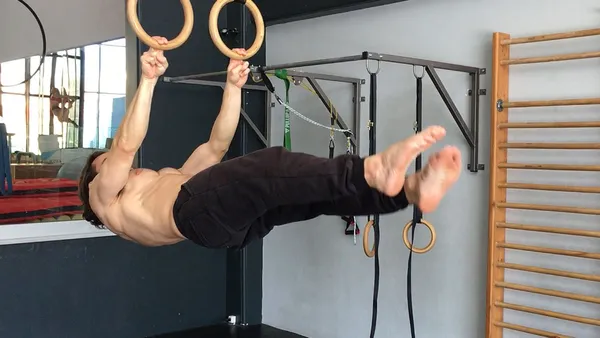Table of Contents
lever calisthenics is a great way to get in shape and build strength without having to go to the gym. Calisthenics are bodyweight exercises that use your own body weight as resistance. With lever calisthenics, you can build muscle, lose weight, and improve your overall fitness. If you're new to lever calisthenics, don't worry - there are plenty of resources available to help you get started. You can find instructional videos online, or you can hire a personal trainer to help you learn the basics. Once you get the hang of it, you can start creating your custom workouts and start seeing results in no time. Kizworld.com offers a wide variety of resources to help beginners get started with lever calisthenics and on their way to achieving their fitness goals.
Lever Calisthenics: The Ultimate Guide to Building Strength and Flexibility
Benefit | Exercise | How to Get Started | Tips | Safety Considerations |
|---|---|---|---|---|
Increased strength | Pull-ups | Find a sturdy bar or tree branch and hang from it with your hands shoulder-width apart. | Start with a few sets of 5-10 repetitions and gradually increase the number of sets and repetitions as you get stronger. | Make sure to warm up before doing lever calisthenics and to use proper form to avoid injury. |
Improved muscle mass | Dips | Find a set of parallel bars and place your hands on the bars shoulder-width apart. | Start with a few sets of 5-10 repetitions and gradually increase the number of sets and repetitions as you get stronger. | Make sure to keep your back straight and your core engaged throughout the exercise. |
Enhanced flexibility | Leg raises | Lie on your back on the floor with your legs extended straight up in the air. | Start with a few sets of 5-10 repetitions and gradually increase the number of sets and repetitions as you get stronger. | Make sure to keep your lower back pressed into the floor throughout the exercise. |
Improved balance | Planks | Start by lying on your stomach with your forearms on the ground and your elbows aligned below your shoulders. | Hold this position for as long as you can, starting with 30 seconds and gradually increasing the time as you get stronger. | Make sure to keep your back straight and your core engaged throughout the exercise. |
Reduced risk of injury | Squats | Stand with your feet shoulder-width apart and lower your body down until your thighs are parallel to the ground. | Start with a few sets of 5-10 repetitions and gradually increase the number of sets and repetitions as you get stronger. | Make sure to keep your back straight and your knees aligned with your toes throughout the exercise. |
I. Getting Started with Lever Calisthenics
What is Lever Calisthenics?
Lever calisthenics is a type of bodyweight training that uses levers to create resistance. This can be done using a variety of equipment, such as bars, rings, and parallettes. Lever calisthenics exercises are often more challenging than traditional bodyweight exercises, but they can also be more effective at building strength and muscle.
Benefits of Lever Calisthenics
There are many benefits to lever calisthenics, including:
- Increased strength
- Improved muscle mass
- Enhanced flexibility
- Improved balance
- Reduced risk of injury
How to Get Started with Lever Calisthenics
If you're new to lever calisthenics, it's important to start slowly and gradually increase the difficulty of your workouts. Here are a few tips for getting started:
- Start with basic exercises, such as pull-ups, dips, and leg raises.
- Use proper form to avoid injury.
- Listen to your body and rest when you need to.
- Be patient and consistent with your workouts.
With time and practice, you'll be able to progress to more advanced lever calisthenics exercises.How to Do a Muscle Up
Exercise | Benefits | Difficulty |
|---|---|---|
Pull-ups | Increased strength, improved muscle mass | Beginner |
Dips | Improved muscle mass, enhanced flexibility | Intermediate |
Leg raises | Enhanced flexibility, improved balance | Advanced |
As you progress in your lever calisthenics journey, you may want to consider using additional equipment, such as weights or resistance bands. This can help you to further challenge yourself and continue to build strength and muscle.The Best Calisthenics Gifts and Accessories
Getting Started with Lever Calisthenics
II. Intermediate Lever Calisthenics Exercises
Exercise Progression
Once you have mastered the basics of lever calisthenics, you can start to progress to more challenging exercises. These exercises will help you to build strength, power, and flexibility. Some examples of intermediate lever calisthenics exercises include:
- Weighted pull-ups
- Weighted dips
- Weighted leg raises
- Weighted planks
- Pistol squats
To perform these exercises safely and effectively, it is important to start with a light weight and gradually increase the weight as you get stronger. It is also important to use proper form and to warm up before each workout.The Best Calisthenics Videos and Tutorials
Training Frequency
The frequency of your lever calisthenics workouts will depend on your fitness level and goals. If you are just starting out, it is best to start with 2-3 workouts per week. As you get stronger, you can increase the frequency of your workouts to 4-5 times per week.It is important to allow your body to rest and recover between workouts. This will help to prevent injuries and ensure that you are making progress.
Exercise | Sets | Repetitions |
|---|---|---|
Weighted pull-ups | 3-4 | 8-12 |
Weighted dips | 3-4 | 8-12 |
Weighted leg raises | 3-4 | 12-15 |
Weighted planks | 3-4 | Hold for 30-60 seconds |
Pistol squats | 3-4 | 6-10 per leg |
Tips for Intermediate Lever Calisthenics
Here are a few tips to help you get the most out of your intermediate lever calisthenics workouts:
- Focus on proper form.
- Start with a light weight and gradually increase the weight as you get stronger.
- Train consistently.
- Allow your body to rest and recover between workouts.
- Be patient and consistent.
With hard work and dedication, you can achieve your lever calisthenics goals.The Best Calisthenics Equipment and Gear
Intermediate Lever Calisthenics Exercises
III. Advanced Lever Calisthenics Exercises
As you progress in your lever calisthenics journey, you may want to try more advanced exercises. These exercises require more strength, flexibility, and coordination, and can help you to take your calisthenics skills to the next level.
Some advanced lever calisthenics exercises include:
- Muscle-ups: This exercise is performed on a pull-up bar, and requires you to pull yourself up until your chin is above the bar, then lower yourself down and do a dip. Muscle-ups are a great way to build upper body strength and coordination.
- Weighted lever rows: This exercise is performed with a weight vest or dumbbell, and involves rowing a weight up to your chest while holding a lever position. Weighted lever rows are a great way to build back and arm strength.
- Front lever: This exercise is performed by holding a straight body parallel to the ground, with your hands on a raised surface and your feet off the ground. The front lever is a challenging exercise that requires a lot of core strength and stability.
- Back lever: The back lever is held with the body in a straight line parallel to the ground, hanging from a bar and gripping it with your hands, and is more challenging than the front lever. The back lever is a great way to build back strength and flexibility.
- Planche: The planche is an advanced calisthenics exercise where you maintain a parallel body with the ground by balancing on your hands, with your body in a straight line from head to heels, supported by your hands. The planche requires a lot of strength, flexibility, and coordination.
These are just a few examples of advanced lever calisthenics exercises.
If you are new to lever calisthenics, it is important to start with the basics and gradually progress to more advanced exercises as you get stronger. Be sure to warm up before doing any lever calisthenics exercises, and use proper form to avoid injury.
Exercise | Difficulty | Benefits |
|---|---|---|
Muscle-ups | Advanced | Builds upper body strength and coordination |
Weighted lever rows | Advanced | Builds back and arm strength |
Front lever | Advanced | Requires a lot of core strength and stability |
Back lever | Advanced | Builds back strength and flexibility |
Planche | Advanced | Requires a lot of strength, flexibility, and coordination |
If you are looking to take your calisthenics skills to the next level, advanced lever calisthenics exercises are a great way to challenge yourself and build strength, flexibility, and coordination.
here are some additional tips for performing advanced lever calisthenics exercises:
- Start with the basics: Before trying any advanced lever calisthenics exercises, it is important to master the basics. This includes exercises like pull-ups, dips, and rows.
- Use proper form: When performing advanced lever calisthenics exercises, it is important to use proper form to avoid injury. This means keeping your body in a straight line and engaging your core throughout the exercise.
- Be patient: Advanced lever calisthenics exercises can be challenging, so it is important to be patient and consistent with your training. Don't get discouraged if you can't do an exercise right away - just keep practicing and you will eventually get there.
The Best Calisthenics Exercises and Variations
Whether you are a beginner or an experienced calisthenics athlete, there are always new exercises to learn and master. Here are some of the best calisthenics exercises and variations to add to your routine:
IV. Benefits of Lever Calisthenics
Improved Strength and Muscle Mass
Lever calisthenics exercises are highly effective for building strength and muscle mass. They engage multiple muscle groups simultaneously, leading to a full-body workout. Exercises like pull-ups, dips, and leg raises target the back, chest, arms, and legs, promoting overall muscular development.
Enhanced Flexibility and Balance
Lever calisthenics exercises also improve flexibility and balance. Movements like leg raises and planks require a wide range of motion, stretching and strengthening the muscles and joints. By holding positions like planks and squats, you enhance your core stability and overall balance.
Exercise | Benefits |
|---|---|
Leg Raises | Hip Flexor and Core Strength |
Planks | Core Stability and Balance |
Squats | Leg Strength and Stability |
Reduced Risk of Injury
Lever calisthenics exercises can help reduce the risk of injury by strengthening the muscles and joints involved in everyday movements. By improving flexibility and balance, you become less prone to falls and other accidents. Additionally, the bodyweight nature of lever calisthenics minimizes stress on the joints, making it a safer option for individuals with joint pain or mobility issues.
V. Conclusion
Lever calisthenics is a great way to get in shape without any equipment. It is a challenging but rewarding form of exercise that can help you build strength, flexibility, and coordination. If you are looking for a new way to get fit, lever calisthenics is a great option. Here are some tips for getting started with lever calisthenics: * Start slowly and gradually increase the intensity of your workouts over time. * Focus on proper form to avoid injury. * Be patient and persistent. It takes time to build strength and coordination for lever calisthenics. * Have fun! Lever calisthenics is a great way to challenge yourself and improve your fitness.